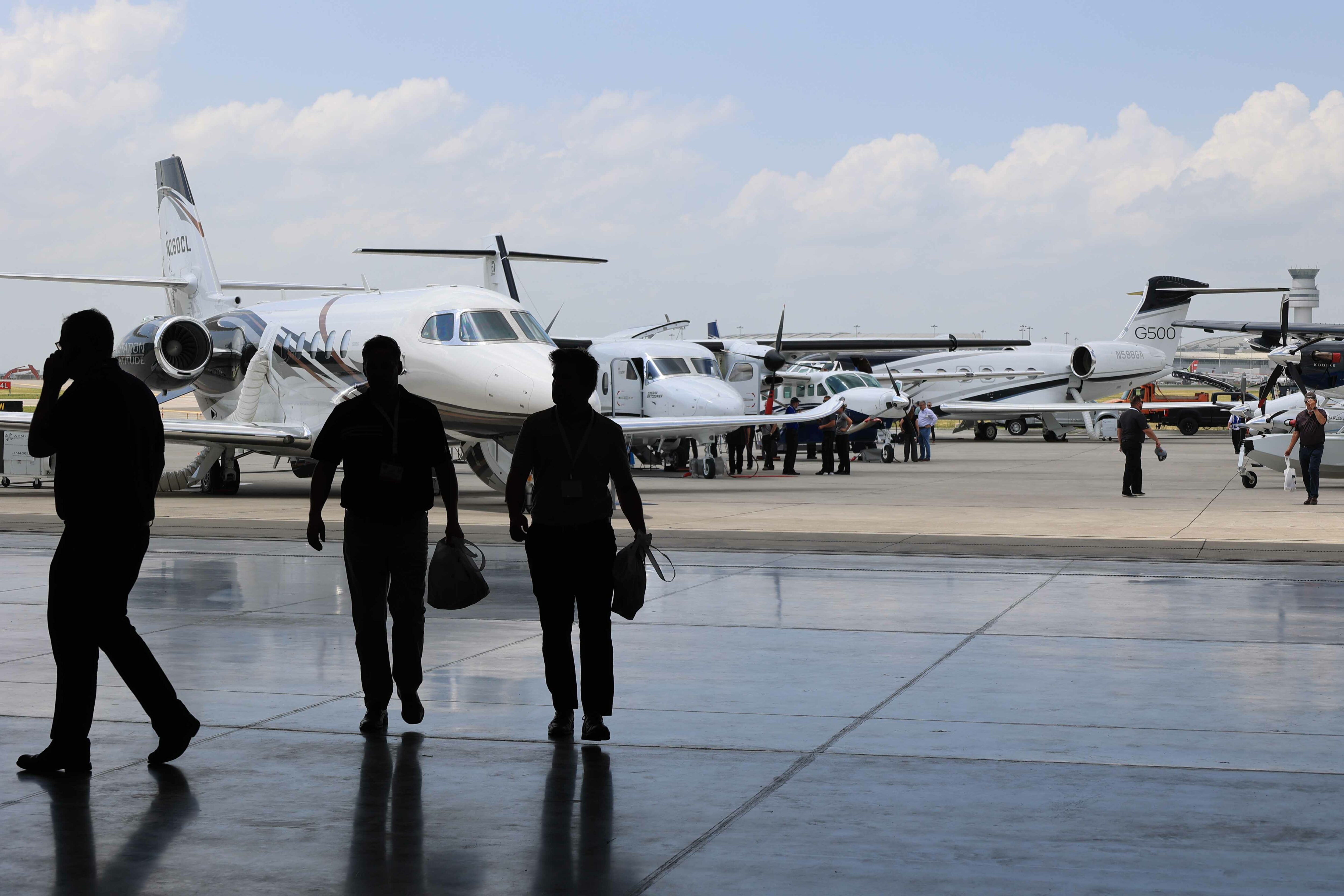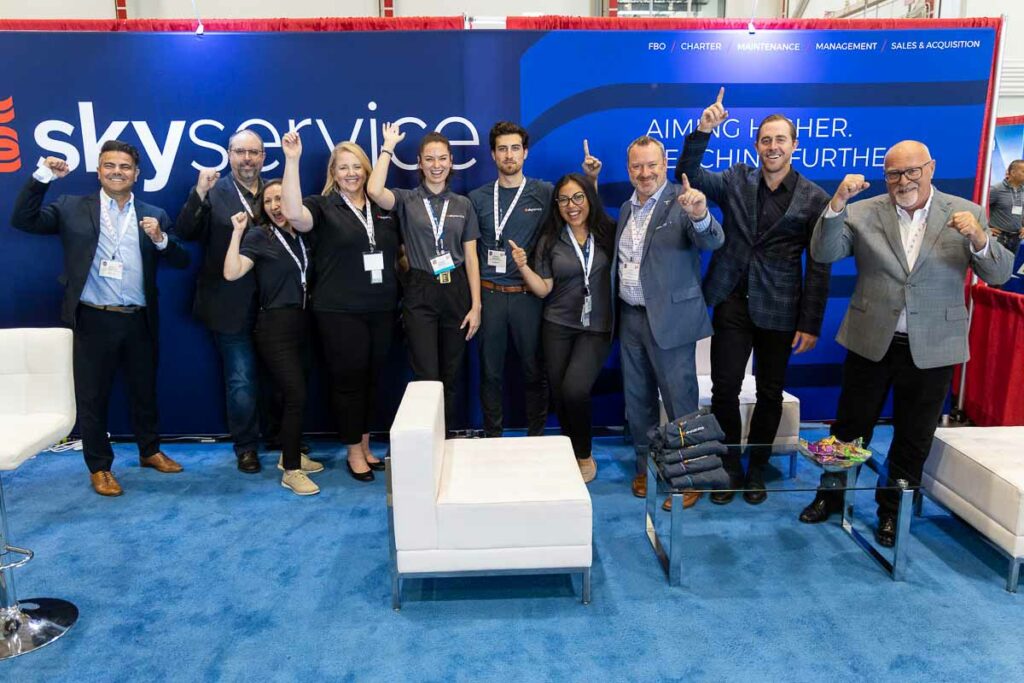Estimated reading time 11 minutes, 27 seconds.
Business aviation is all around us. In fact, it comes in many shapes and sizes, from turboprops to long-range jets, and helicopters, too. It’s the use of privately-owned aircraft to support the operations of corporations, and it’s a critical contributor to Canada’s economy.
Canadian business aviation has faced many ups and downs over the last several years (while physically distancing from one another), but the community is strongest when it comes together. This year, bizav stakeholders reunited in person, at last, and the excitement was palpable.
In mid-June, bizav personnel traveled from all across Canada to Toronto to attend the Canadian Business Aviation Association’s (CBAA’s) annual convention and exhibition — following two years of virtual events. Skyservice Business Aviation played host to 573 attendees — including 41 vendors — who gathered at the company’s brand-new south terminal facility at Toronto Pearson airport to attend education sessions, network with one another, and get a closer look at 15 of the latest and greatest business aircraft on static display.

For the last 60 years, CBAA has acted as a voice and advocate for more than 400 business aviation companies and organizations across the country, and the focus of this year’s convention was to chart a path to a sustainable, resilient, and prosperous future for bizav. Association president Anthony Norejko wanted members to leave the convention “armed with new and critical information and be better prepared to build their successful future.” Having attended this year’s show, it was clear to the Skies team that the CBAA achieved just that.
The convention program was carefully designed, taking attendees on a journey through sessions about leadership, which flowed into sessions about opportunity, and finished with the future.
“Christopher Broyhill talked about what leadership should look like in this industry; Rolland Vincent discussed opportunities, and what’s happening in the industry with aircraft sales both in Canada and across the globe; and the future is what followed — talking about sustainability and about cybersecurity threats, as a lot of aircraft still have old communication systems,” said Norejko as he described the first day of the show.
“We concluded with Greg McDougall [of Harbour Air],” he added. “The idea is that it’s a Canadian story — a Canadian seaplane company 15 years ago goes carbon neutral, and two years ago flies an electric aircraft, and within the next year will probably carry paying passengers [on electric aircraft]. . . . [McDougall] wanted to be a disrupter, and in many ways, that’s what we want to do here.”

Notably, this year’s CBAA convention was the association’s first carbon-neutral event, which was an important achievement that Norejko said the association will continue to strive for. Attendees were also able to learn more about sustainable aviation fuel, and how to establish a sustainable operation. It all lends to the aerospace industry’s “net-zero 2050” goal.
“How do you lead in times like this?” commented Norejko. “You just have to put one foot in front of the other. So that’s why we wanted to be carbon-neutral, and why we will continue to do something like that.”
Attendees were also treated with an incredible — and undeniably inspiring — presentation by Brian Shul, a retired U.S. Air Force major who went on to fly the fastest aircraft in the world (the SR-71 Blackbird) after getting shot down during the Vietnam War.
Adding to the event’s highlights, the CBAA successfully raised almost $30,000 for Hope Air during the association’s annual golf tournament, which took place prior to the first day of the convention. Hope Air is a charity that offers free travel and accommodations for Canadians in financial need who must travel to medical care far from home.
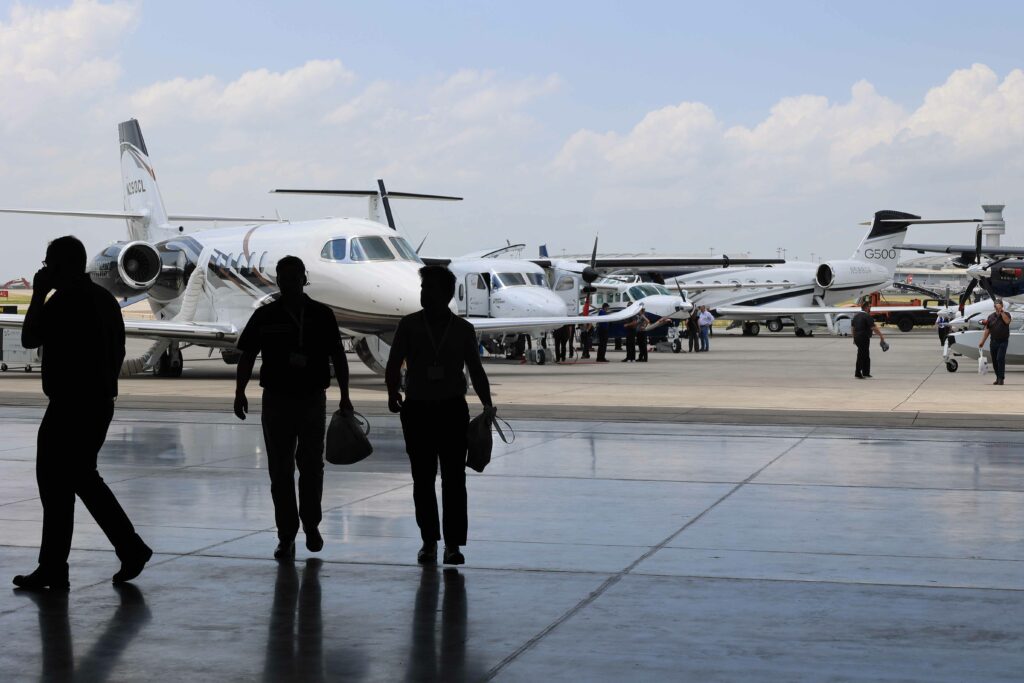
“We have members who make their airplanes available to help Hope Air, and then we also submit the dollars to the charity to help Canadians,” explained Norejko. “The objective is to raise as much money as we can for Hope Air; that’s why the golf tournament exists.”
Turbulence is Inevitable
While there were many positive moments during this year’s CBAA convention, and Canadian bizav is in a relatively good place overall, Norejko acknowledged that the association must also continue to address key issues facing the industry. One of those issues — and arguably the biggest issue — is the looming luxury tax in Canada.
As of right now, a 10 percent “luxury tax” on new private aircraft worth $100,000 or more is expected to come into effect on Sept. 1. The CBAA has been trying to engage in dialogue with the Canadian government to convey the punitive impacts this tax will have on the aviation industry — including jobs — and, until recently, had thought it was making headway.
Norejko had brought together a number of industry associations and partners, as well as the unions, to fight against the luxury tax on aircraft. Norejko said “this caused the NDP to put the motion forward that said they recognize that because the government had done no impact analysis” regarding aviation, the luxury tax would be applicable on only boats and vehicles as of Sept. 1.
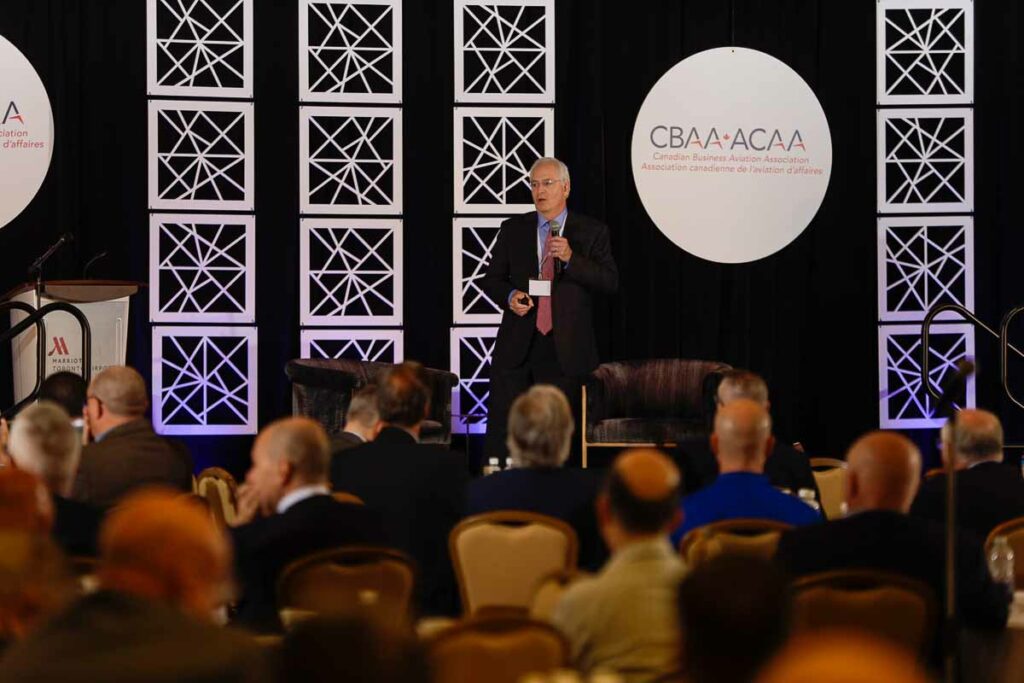
“When they were asked the question in the finance committee, ‘What impact would this tax have if you impose it on aircraft?’ They couldn’t answer the job loss question,” Norejko told Skies.
Nonetheless, on July 14 the federal government announced that it decided to go against the unanimous support from the parliamentarians to separate aircraft from the luxury tax, as it wants to complete more impact studies. The tax would, however, be “relieved” on sales of certain aircraft for export completed by a registered vendor, according to the government.
Norejko on July 19 released a statement in response to the government’s announcement, saying the association has “lost faith in the constructive dialogue with government on decisions of vital importance to our members.”
On a more optimistic note, Norejko said he has definitely seen improvements regarding the second key issue that the CBAA has been prioritizing over the last several months: restoring the Canada Border Services Agency (CBSA) telephone reporting center. While speaking with Skies at the convention, Norejko said the improvements resulted from the vaccine mandate changes and noticeable commitment from the CBSA.
“The process that we have in place today [for general aviation and business aviation traffic coming into Canada] is broken, and Covid exposed that,” he noted. “Coming back [to Canada from the U.S.], we’ve had operators on the phone for two hours, waiting on hold with CBSA for clearance.”
Now, the CBSA “is showing not only dollars in the budget, but a willingness to take the process digital and really transform the experience.”
Norejko added: “In their current vision, you will be able to basically pre-clear online. Let’s say you’re down in Tampa, Florida, and you’re coming back to Muskoka (Ontario), where maybe the customs is closed. Through an app, you’d be able to complete your clearance in Tampa. You might get a green light and you’ll be able to go directly to Muskoka. And so long as you check in with the app and say, ‘I arrived at this time and at this location, like I told you I would,’ then you were cleared.
“So, this digital transformation would be huge, because we all exist on a time-cost benefit analysis.”
The Future is Still Bright
Despite a few challenges still ahead for Canadian bizav, the future is bright. Of course, the pandemic’s impact on the commercial travel system caused business aviation to grow considerably. And Norejko is looking forward to an exciting future in bizav.
“Because of the rate of change and our ability to leverage the very latest in design and technology, we’ll lead in new modes of flight — from electric, regional-focused aircraft to urban air mobility,” he said.
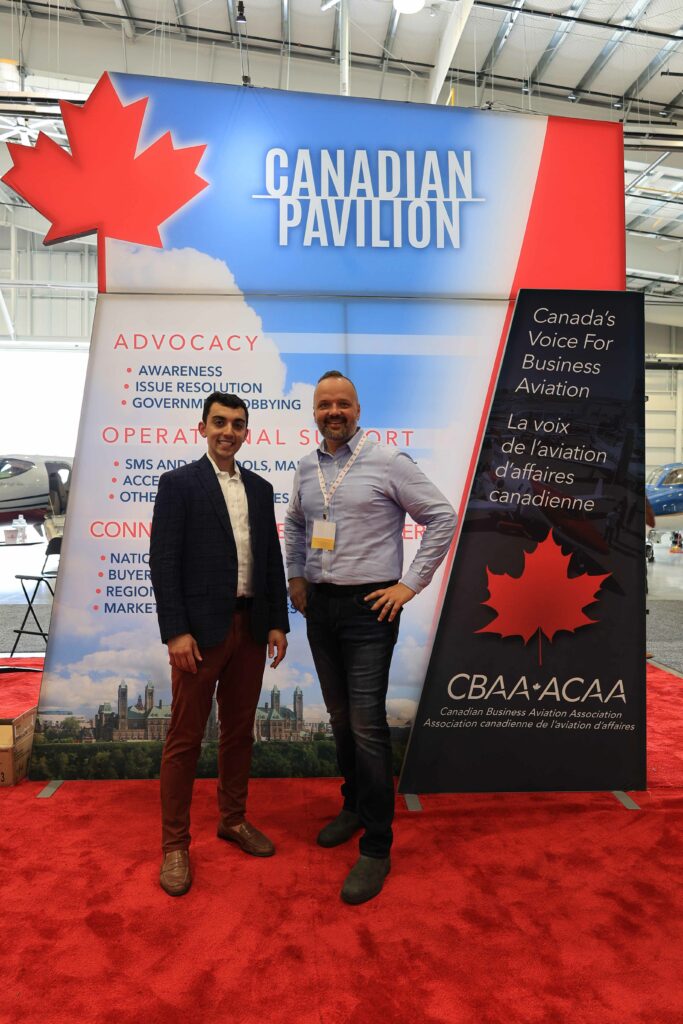
At the end of the day, it’s all about improving Canadians’ abilities to connect and prosper, both at home and around the globe.
To all the CBAA members, get your rodeo attire ready, because the convention is heading west next year to Calgary, Alberta, from July 11 to 13 — which will coincide with the famous annual Calgary Stampede. See you there!
